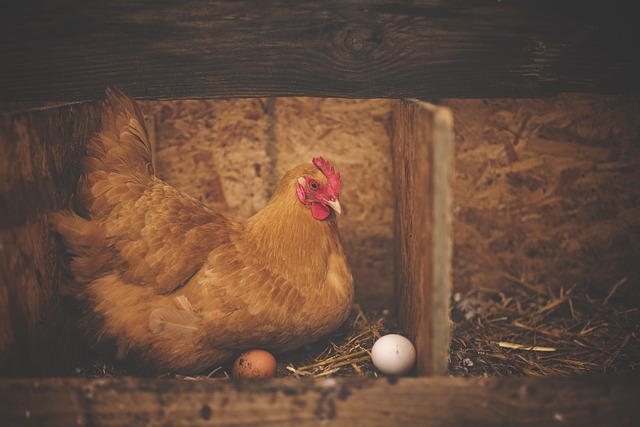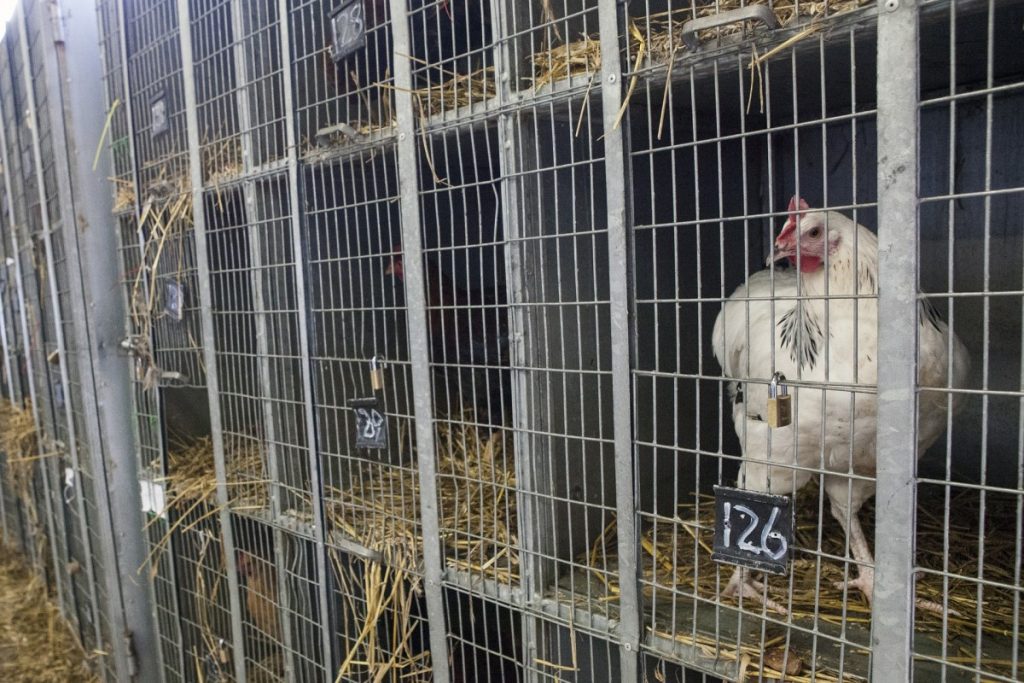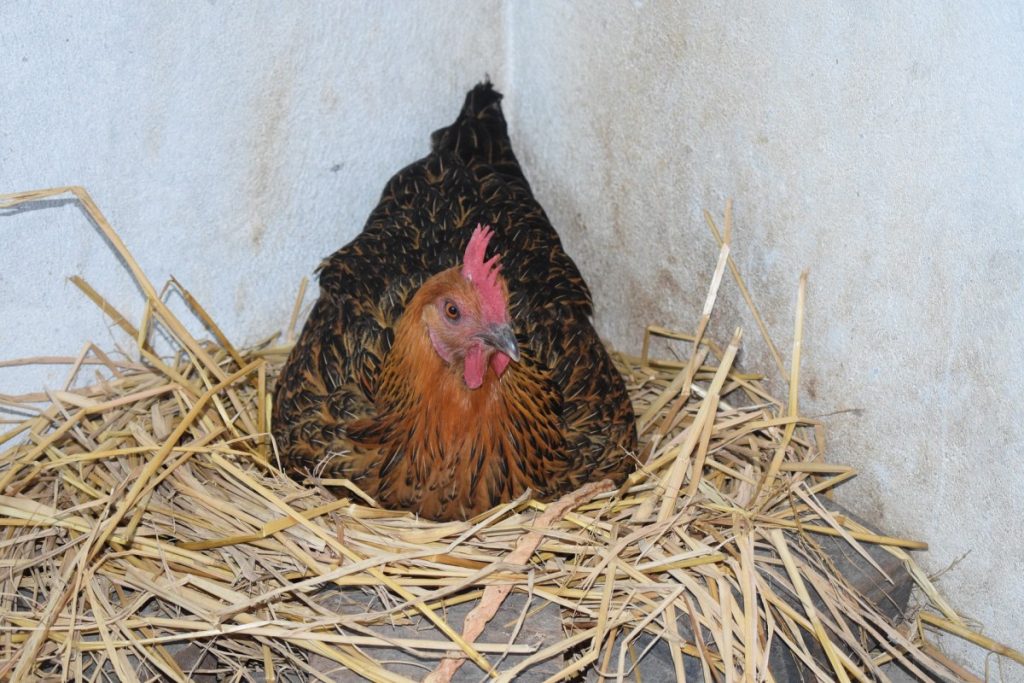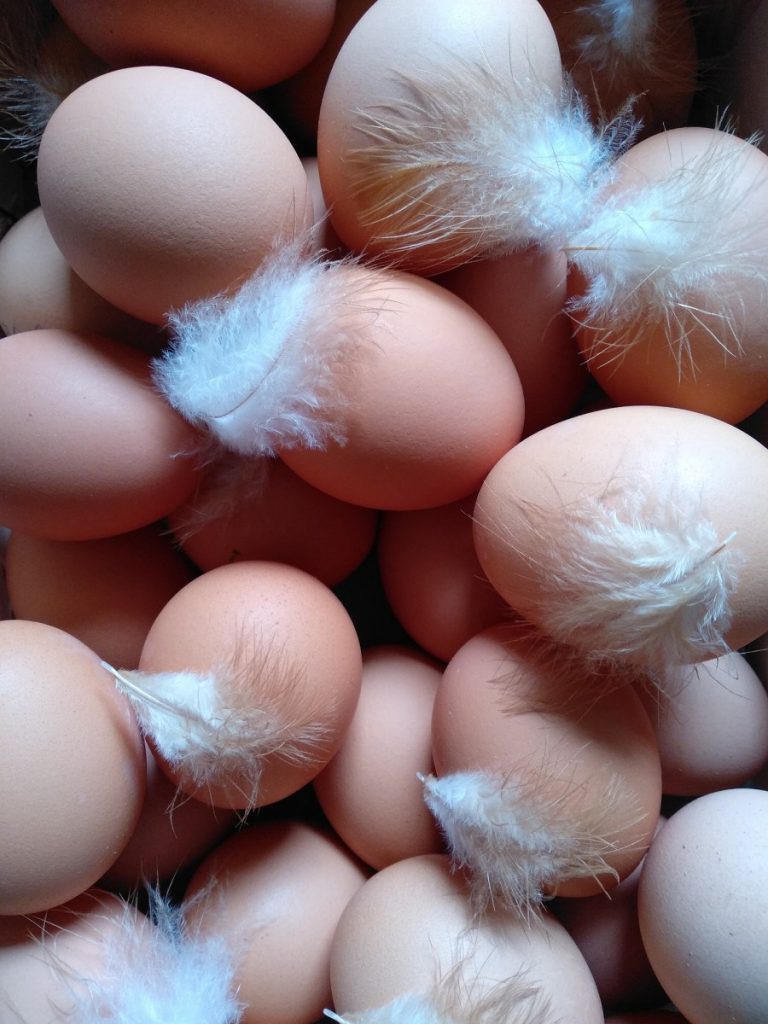Attention: Sometimes we receive a commission when you make a purchase through the links on our site.
The number one reason we like having backyard chickens at our house, is to ensure these birds live a happy life. Ok…weeellll…actually that’s not true, we, probably like you, love having fresh and great tasting eggs. And unless you love doing eggs hunts on a daily basis, your backyard chickens will need nesting boxes to lay those delicious, fabulous eggs.
When planning for your backyard chickens, plan on having a nesting box for every four hens, with a minimum of two nesting boxes, assuming you have more than one hen. You might be able to get away with fewer nesting boxes, but I would rather have unused boxes instead of trying to create more.
Some chicken coops have built in nesting boxes. If your chicken coop just so happens to NOT have them built in, that is OOOOK. You have several options to make it happen.
Hens Like Privacy
One of the most important influences you can have on high egg production in your backyard chicken flock is to provide a safe, clean, and peaceful place for your hens to lay their eggs. Chickens like to scratch, roost, and lay in different places for different reasons. It is your responsibility to provide the right environment for each. In this article we will focus on the best way to provide enough nesting boxes for your lady birds.
Click Here for 11 Unique Chicken Nesting Box Ideas
Size
Size is important for your nesting boxes, or they won’t be utilized. If the nesting boxes are not adequate, your backyard chickens will look elsewhere to lay or even worse, you won’t have any eggs!
You will want your nesting boxes to be at least one foot tall by one foot wide by one foot deep. That way your hens will have plenty of room to turn around and fluff up the area before they lay. You can do a bigger area, of course.
One thing to consider when doing a bigger nesting box size is to make sure two hens can fit in the box. If it is too crowded, you might have a bit of fighting and pecking so see who gets to lay first. Fighting can lead to cracked eggs as well, which is never good.
Rule of Thumb
Rules of thumb are always interesting. Sometimes they seem so outlandish. Other times they are spot on.
A good general rule of thumb is to have one nesting box for every three to four hens. It is always better have more than you need, then to not have enough. It is pretty common to hear long time chicken keepers to say: “More boxes, more eggs!” We have also heard of backyard chicken keepers using one box for every six to eight hens.
Your best bet when planning your backyard chicken coop set up is to plan for four chickens per nesting box. Worst case, you have nesting boxes not being used, which may mean you can get more chickens! I think that beats having to cut your new coop to modify it by adding more nesting boxes.
Avoid Factory Settings
I always have one thought that always comes to mind for me when I think about the question: “How Many Chickens Per Nesting Box?” That one thought is am I better than the big factory farms? You can obviously get away with smaller housing and fewer nesting boxes, but should you?
A lot of resources I have come across from the United States Department of Agriculture (USDA) is geared towards big factory farms, not towards backyard chicken keeping. They also seem to be trying to establish a minimum. I like to treat my backyard chickens better and provide more than just the minimum.
Trial and Error
We have literally had days where there were about ten eggs in two nesting boxes while the other two nesting boxes were untouched. So you might see a wide variation and it is somewhat an exercise in trial and error. One factor that seems to affect this the most is the time of day that your birds lay their eggs. You will find that hens will either be “morning layers” or “evening layers”.
If you have an even split of laying times between your birds, then you will need fewer nesting boxes. If they all tend to lay at the same time, then you will need more nesting boxes. The frequency and amount of eggs that they lay will also impact the amount of nesting box space you need to provide.
Some birds will lay everyday, and you may even get a hen that is a legend and that lays more than once a day at times. Most hens will lay five to six eggs a week. This may changes with the weather and the age of the hens. Keeping track of your daily egg yields will help you maintain enough nesting boxes to avoid overcrowding in the coop.
Nesting Materials
Once you have your nesting boxes ready, the next step is to add your nesting materials. Straw, sand or sawdust are the most common materials I have seen for nesting boxes.
These materials provide two different purposes. First, they help hide the eggs. Chickens use nesting boxes as a way of hiding eggs from predators. Second, they give a soft landing to the eggs as they are being laid. Nobody likes broken eggs.
Pay Attention
As you keep up with your flock’s nesting boxes, here are some important things to keep in mind:
Perform Periodic Egg Hunts
If chickens can not find room in a nesting box to lay their eggs, they will find a secluded place of their own. It is helpful to look to see if eggs are being laid somewhere away from their coop or run. This will help let you know that there is a problem with the nesting box space.
Ideal Material
You do not need to provide state of the art equipment for your backyard chickens’ nesting boxes. They can be homemade or purchased. It is true that you can use a crate, or even old drawers from a chest of drawers. But for the best sanitation, the material should be non-porous like plastic or metal.
Sometimes it is nice to have a product that looks great and will last a long time, even if that means you do not DIY. If you are thinking that might be the case, check out this pre-made nesting box from Tractor Supply.
Cleanliness is Key
Remember that these nesting boxes are where your food is going to be deposited. They should be the cleanest part of the coop. If you are filling them with sand, shavings, or straw, it should be replaced regularly. Make the nesting boxes easy to access so they can be cleaned quickly everyday. Clean nesting boxes will also go a long ways in making sure they get used.
Knowing the Right Size
If you have smaller birds, or bantam breeds, you can get away with nesting boxes that are smaller than one foot wide by one foot tall by one foot deep. We have found that this size works well with bantam breeds and smaller, younger hens. The bird should feel safely enclosed without having to squeeze in or fight for space. If you can do bigger boxes, obviously, that is always recommended.
Should Nesting Boxes Be Off the Ground?
You will commonly read that you need to mount nesting boxes around two feet off the ground. This is typically for ease of cleaning and collecting eggs. Be sure to adjust the height for your breed. For example, Silkies are poor fliers, and may not be able to reach something several feet off the ground.
It is ok to keep them on the ground though. I think the main reason to keep nesting boxes off the ground is so you are not losing any floor space. With them being up off the ground, your chickens can still walk underneath them.
Discourage your hens from using them as roosts. The best way to do this is by having your roosting bar higher than the nesting boxes.
Conclusion
Keeping a well cared for nesting box system for your flock is the most important thing to having good egg production and getting the most out of your hard work. Keep them clean, uncrowded, and easy to access. Look for signs from your birds that there are problems. Such as eggs being laid in the chicken run or bad behavior near the boxes. Keep the construction simple and easy to maintain. Do what works for you, and you will be successful.
Hopefully you were able to learn something from this post and gain more confidence to get your own chicken nesting boxes going. Remember to share this post on social media so others can get their own chicken nesting boxes started. Sharing is caring and helps us keep growing here at BackyardChickensHQ.




